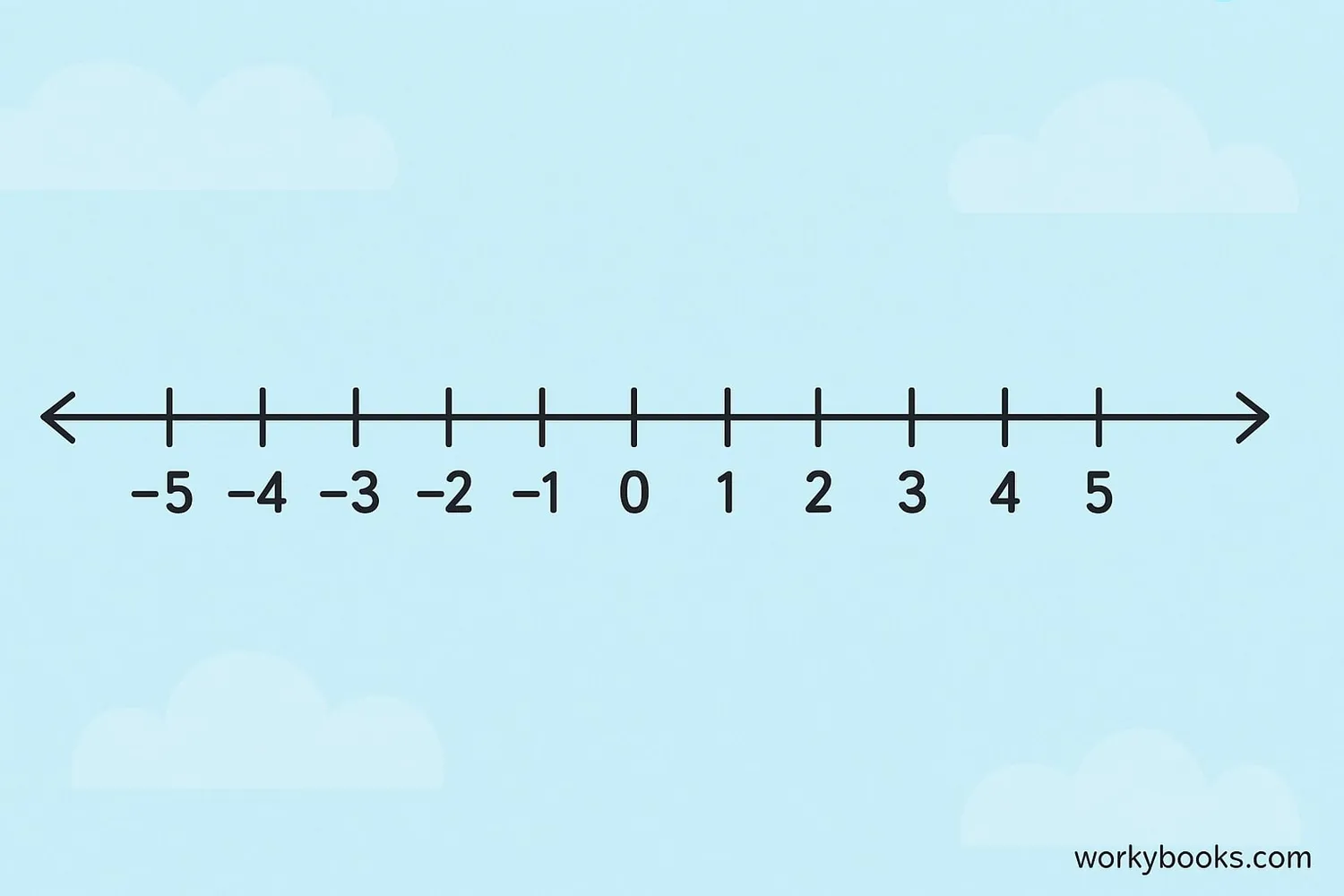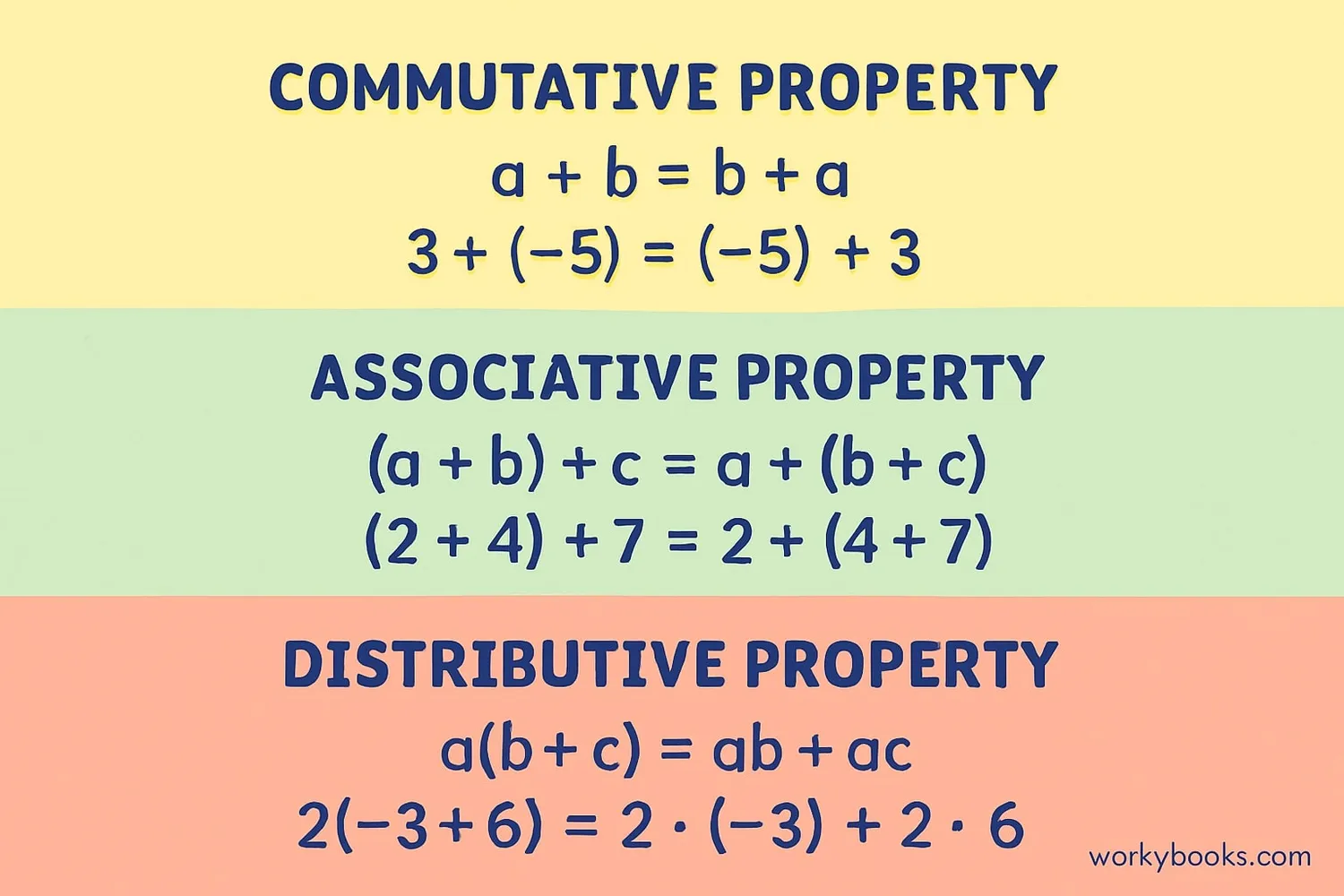Integers - Definition, Examples, Quiz, FAQ, Trivia
Learn about whole numbers, their properties, and how to work with them
What are Integers?

Integers are special numbers that include:
• Positive whole numbers like 1, 2, 3, 4, ...
• Negative whole numbers like -1, -2, -3, -4, ...
• Zero (0)
Integers do not include fractions, decimals, or parts of numbers. They're complete whole numbers that can be positive, negative, or zero.
We use the symbol ℤ to represent integers. This comes from the German word "Zahlen," which means "numbers."
Key Concept
Integers are like stepping stones on a number line that go forever in both directions.
Integer Number Line
Types of Integers

Integers come in different types:
Positive Integers
Numbers greater than zero: 1, 2, 3, 4, ... They represent quantities we can count.
Negative Integers
Numbers less than zero: -1, -2, -3, -4, ... They represent opposites or deficits.
Zero
The number 0 is neither positive nor negative. It represents nothing or a starting point.
Real World Examples
• Positive integers: 5 apples, 10 steps forward, $20 in your pocket
• Negative integers: 15° below zero, 7 floors down, $5 debt
• Zero: Sea level, no money, starting position
Integer Operations
Working with integers follows special rules. Let's look at how to add, subtract, multiply, and divide them:
Addition
Same signs: Add and keep the sign
5 + 3 = 8
Different signs: Subtract and keep sign of larger number
-5 + 3 = -2
Subtraction
Change to addition: a - b = a + (-b)
7 - 4 = 3
5 - (-2) = 5 + 2 = 7
Multiplication
Same signs: Positive result
4 × 3 = 12
(-4) × (-3) = 12
Different signs: Negative result
(-4) × 3 = -12
Division
Same signs: Positive result
15 ÷ 3 = 5
(-15) ÷ (-3) = 5
Different signs: Negative result
(-15) ÷ 3 = -5
Remember
When multiplying or dividing integers: Same signs = Positive, Different signs = Negative
Properties of Integers

Integers follow important mathematical properties that help us work with them:
Commutative Property
Changing the order doesn't change the result:
a + b = b + a
a × b = b × a
Example: 5 + (-3) = (-3) + 5 = 2
Associative Property
Grouping doesn't change the result:
(a + b) + c = a + (b + c)
(a × b) × c = a × (b × c)
Example: (2 + 3) + (-5) = 2 + (3 + (-5)) = 0
Distributive Property
Multiplying over addition:
a × (b + c) = (a × b) + (a × c)
Example: 3 × (4 + (-2)) = (3 × 4) + (3 × (-2)) = 6
Closure Property
Operations on integers give integers:
a + b = integer
a × b = integer
Example: 7 + (-3) = 4 (integer)
Integer Practice Quiz
Test your understanding of integers with this 5-question quiz. Choose the correct answer for each question.
Frequently Asked Questions
Here are answers to common questions about integers:
Math Trivia
Discover interesting facts about integers and numbers:
Ancient Integers
The concept of negative numbers was first recognized in China around 200 BCE. The Chinese used red rods for positive numbers and black rods for negative numbers in their calculations.
Integer in Computers
Computers use integers in binary form (0s and 1s). The largest integer a 32-bit computer can represent is 2,147,483,647. That's over two billion!
Infinite Integers
There is no largest or smallest integer! Numbers go on forever in both positive and negative directions. This is called an "infinite set."
Largest Prime
The largest known prime number as of 2023 is 2⁸²˒⁵⁸⁹˒⁹³³ - 1. This number has 24,862,048 digits! It's a special type of integer that can only be divided by 1 and itself.




